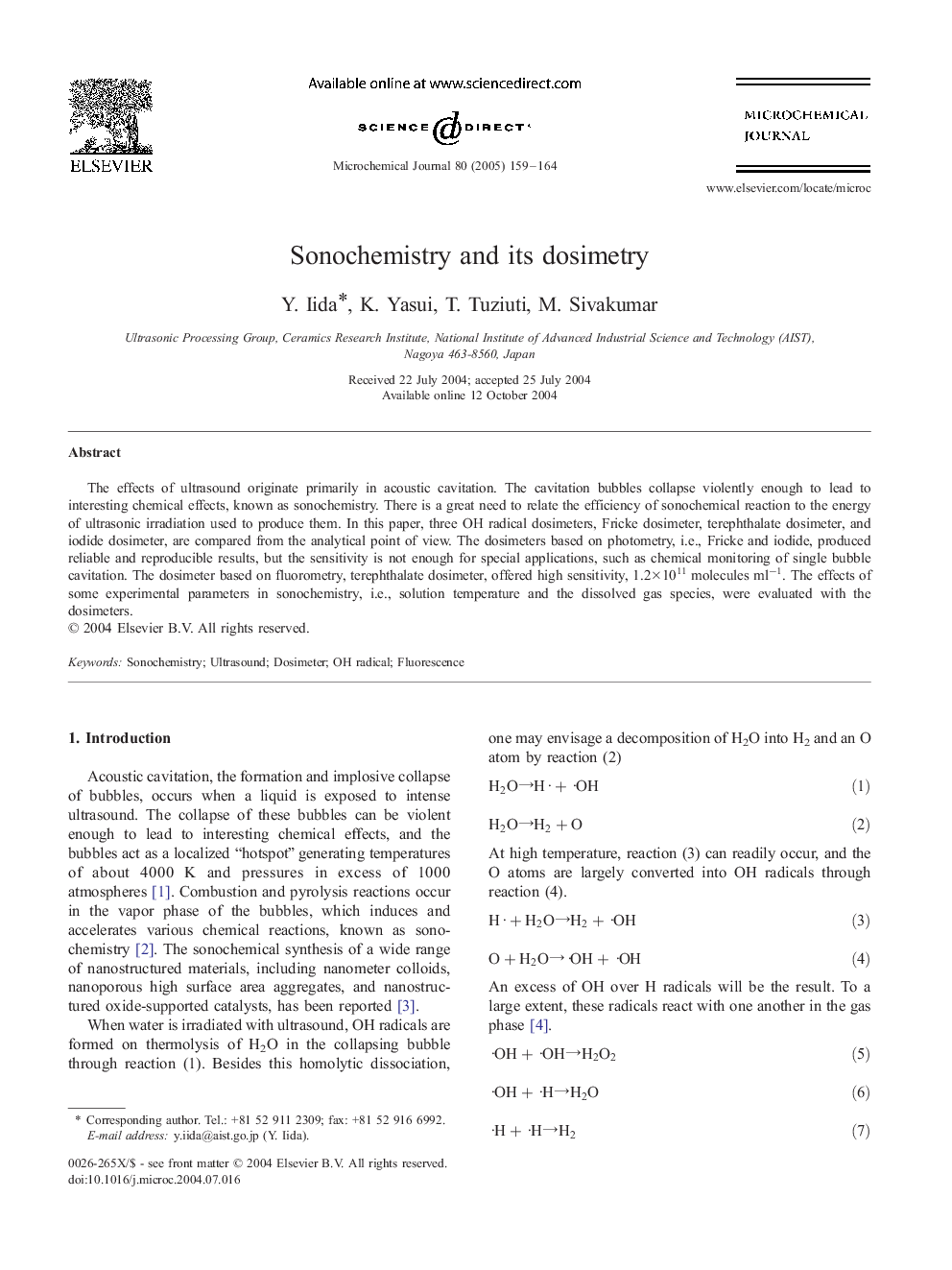| Article ID | Journal | Published Year | Pages | File Type |
|---|---|---|---|---|
| 9754991 | Microchemical Journal | 2005 | 6 Pages |
Abstract
The effects of ultrasound originate primarily in acoustic cavitation. The cavitation bubbles collapse violently enough to lead to interesting chemical effects, known as sonochemistry. There is a great need to relate the efficiency of sonochemical reaction to the energy of ultrasonic irradiation used to produce them. In this paper, three OH radical dosimeters, Fricke dosimeter, terephthalate dosimeter, and iodide dosimeter, are compared from the analytical point of view. The dosimeters based on photometry, i.e., Fricke and iodide, produced reliable and reproducible results, but the sensitivity is not enough for special applications, such as chemical monitoring of single bubble cavitation. The dosimeter based on fluorometry, terephthalate dosimeter, offered high sensitivity, 1.2Ã1011 molecules mlâ1. The effects of some experimental parameters in sonochemistry, i.e., solution temperature and the dissolved gas species, were evaluated with the dosimeters.
Related Topics
Physical Sciences and Engineering
Chemistry
Analytical Chemistry
Authors
Y. Iida, K. Yasui, T. Tuziuti, M. Sivakumar,
